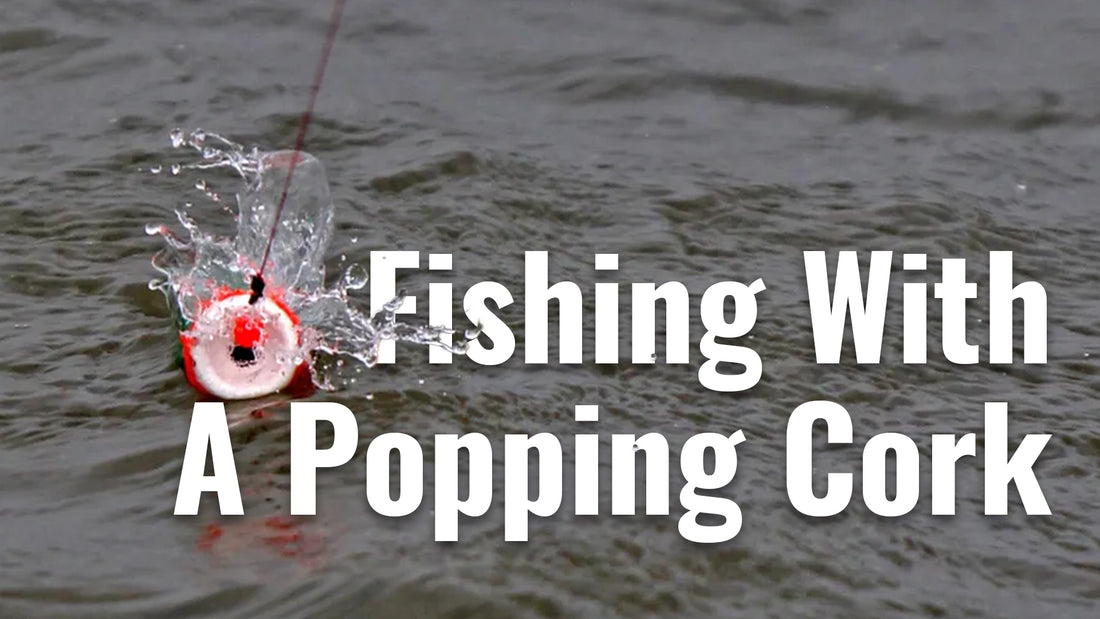Fishing is an age-old pastime that connects us to nature, providing both relaxation and the thrill of the catch. Among the myriad techniques available, fishing with a popping cork stands out for its simplicity and effectiveness, especially in saltwater environments. Whether you're a seasoned angler or a novice looking to try something new, this method can be both productive and fun. Let’s dive into the art of fishing with a popping cork.
What is a Popping Cork?
A popping cork is a type of fishing float that creates noise and commotion on the water's surface when jerked, mimicking the sound of prey species such as shrimp. This action attracts predatory fish like redfish, speckled trout, and snook. The popping cork rig consists of a buoyant cork or foam float, a leader line, and a hook, often baited with live shrimp or artificial lures.

(Caller.com)
Why Use a Popping Cork?
- Attracts Fish: The popping sound and splashing motion draw fish from a distance, making it easier to locate and catch them.
- Versatility: Popping corks can be used in various water conditions, from shallow flats to deeper waters.
- Visibility: The bright colors of the cork make it easy to spot, so you can see when a fish takes the bait.
- Ease of Use: It’s a straightforward method that doesn’t require extensive experience, making it ideal for beginners.
Setting Up Your Popping Cork Rig
To set up a popping cork rig, you’ll need the following:
- Popping Cork: Choose a cork based on the water conditions. Heavier corks are better for choppy waters, while lighter ones are suitable for calm conditions.
- Leader Line: A fluorocarbon leader line is preferred for its invisibility underwater. Lengths can vary, but a common choice is around 18-24 inches.
- Hook: Match the hook size to your bait. For live shrimp, a 1/0 or 2/0 circle hook is effective.
- Bait: Live shrimp, minnows, or artificial lures that mimic small baitfish work well.
How to Fish with a Popping Cork
- Cast and Position: Cast your rig near structures, grass lines, or drop-offs where fish are likely to be. Allow the cork to settle on the water's surface.
- Pop and Pause: Give the rod a sharp jerk to create a popping sound and splash. Let the cork settle back down and wait for a few seconds. The popping noise attracts fish, while the pause gives them time to strike.
- Watch for Bites: Keep an eye on the cork. When it disappears underwater, it’s a sign that a fish has taken the bait. Reel in the slack and set the hook with a firm lift of the rod.
- Retrieve and Repeat: If you don’t get a bite after a few pops, reel in and cast to a different spot. Repeat the popping and pausing technique.
Tips for Success
- Vary Your Pops: Experiment with different popping rhythms and intensities to see what attracts fish on a given day.
- Use Fresh Bait: Fresh live bait is often more effective. If using artificial lures, ensure they mimic the local prey species.
- Adjust Depth: If you’re not getting bites, adjust the length of the leader to change the depth at which your bait is presented.
- Stay Patient: Fishing requires patience. If the fish aren’t biting, try different locations and techniques.
Best Locations for Popping Cork Fishing
Popping corks are especially effective in coastal saltwater environments. Look for:
- Grass Flats: These shallow areas are often teeming with baitfish, attracting predatory species.
- Oyster Beds: Fish like redfish and speckled trout often hunt around oyster beds.
- Channels and Drop-offs: These areas provide cover and ambush points for predatory fish.
Conclusion
Fishing with a popping cork is an excellent way to enhance your angling experience. Its ability to attract fish through sound and motion, combined with its simplicity, makes it a favorite among both novice and experienced anglers. So, the next time you head out to the water, bring along a popping cork rig and enjoy the excitement of this dynamic fishing method. Happy fishing!

